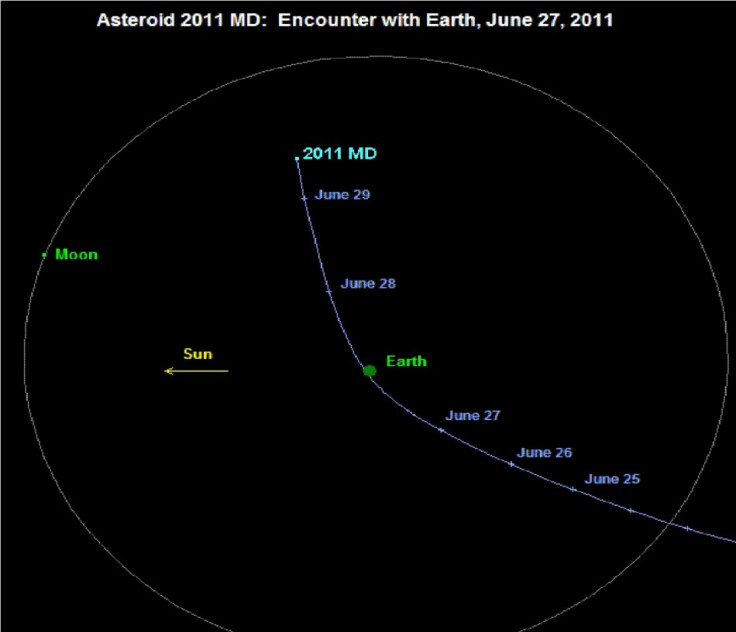Diminutive Asteroid 2011 MD whips past Earth in close shave

Asteroid 2011 MD, a small space rock the size of a tour bus, zipped past Earth in what was a close shave in cosmic terms. The flyby was tantalizingly close to Earth, and was at some point closer to the planet than some satellites.
The cosmic event was not billed to set off any catastrophe, but the rare flyby was an enormous photo opportunity for sky watchers.
The space rock came within 7,500 miles of Earth at 1 PM EDT, before flying away further out.
For a comparison, geosynchronous satellites orbit Earth at a height of 22,236 miles, while the International Space Station is at an altitude of 220 miles.
With a width of mere 18 meters, the asteroid had been dismissed initially by astronomers as a piece of space junk.
The asteroid was flying over the southern Atlantic Ocean, off the coast of Antarctica, at the time of its closest approach, space.com reported.
The asteroid, which was discovered only in the last week, belonged to those rather diminutive group of space rocks, and no harm was predicted by astronomers even as it closed in on Earth ominously.
“We’re just waking up to the fact that Mother Nature has been shooting these things across the bow for millennia,” said Don Yeomans, a NASA scientist, according to the Inquirer.
Its small size meant the asteroid would not survive a fall through Earth's atmosphere, let alone land on Earth as a monolith. The close shave with Earth also meant that the asteroid was pushed off onto a new trajectory through the solar system.
Early this year, another space rock, called asteroid 2011 CQ1, had flown past Earth even more closely. The flyby, which was on February 4, was within 3,400 miles of Earth, marking the closest recorded flyby of an asteroid.
Smaller asteroids like 2011 MD and 2011 CQ1 are expected to buzz Earth with close shaves about once every six years, according to astronomers.
Asteroids were formed are when the solar system took shape some 4.5 billion years ago. Asteroid pieces, also called meteorites, quite often break free and plunges through the atmosphere.
Astronomers have been on the watch out for any possible collision with Earth. Unmanned spacecraft have landed on asteroids in the past.
© Copyright IBTimes 2025. All rights reserved.



















